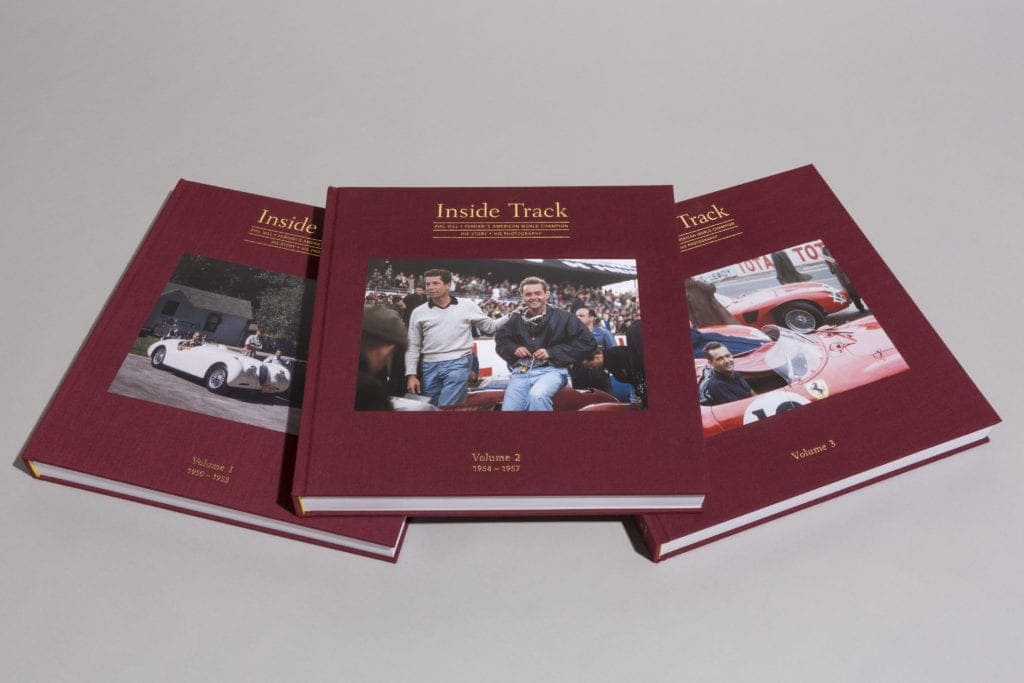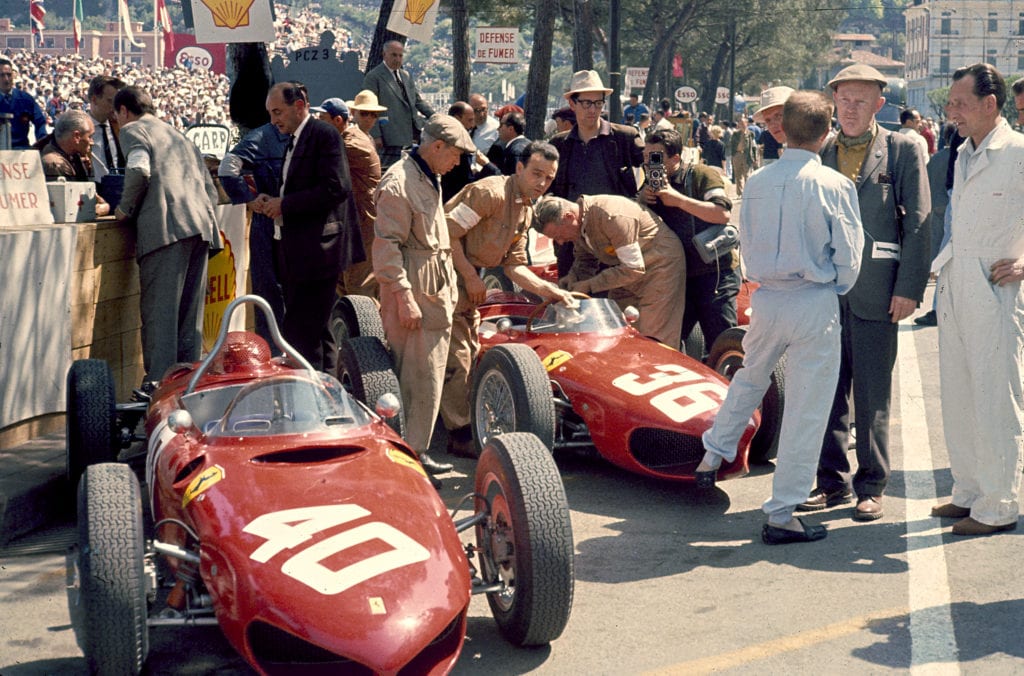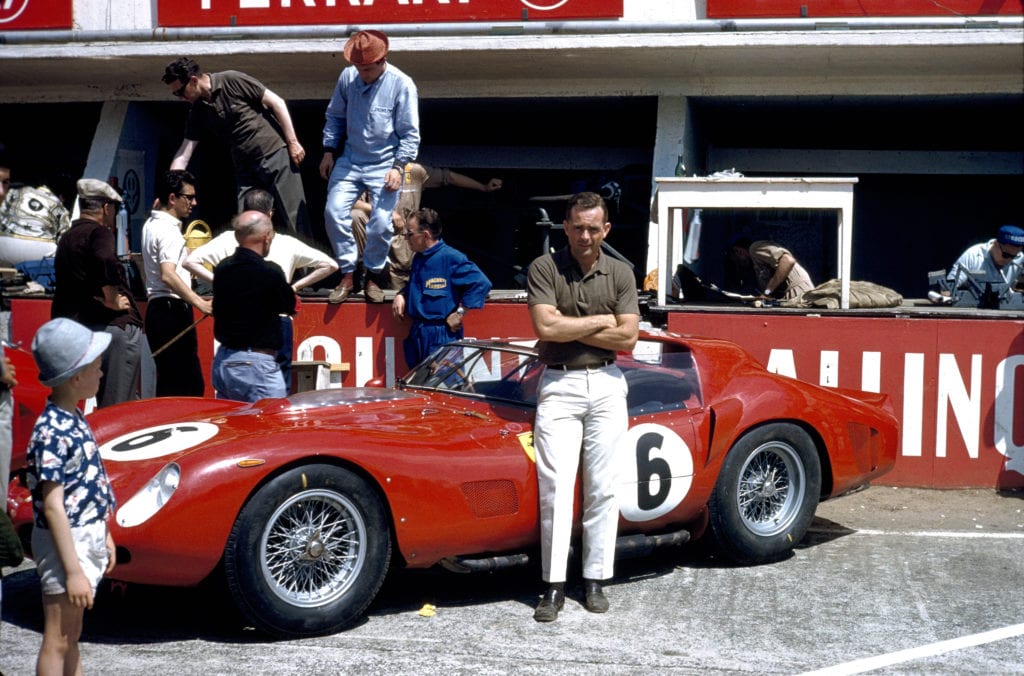Inside Track…inside Phil Hill’s racing world

At Revs Institute we love automotive history and are committed to making it accessible and user-friendly. We’ve just reworked the digital library so that it is easier to use. Check in at https://library.revsinstitute.org/.
It would be difficult to find a book about automobiles that is not in Revs Institute’s library in Naples. They’re all there, 21,642 tomes covering everything from brass-era autos to supercars.
One of the newest and heaviest additions is titled Inside Track. The 3-volume set weighs in at 21.8 pounds and is worth every page and ounce because it shares for the first time the complete photographic work of Phil Hill.
Hang on, you might think. Phil Hill’s photos? Wasn’t he a race-car driver?
In addition to being a championship racer, Phil was an ardent motorsports fan. When he traveled to a competition in Cuba, France, Argentina, wherever, he saw the race not only as part of his profession, but also as a new adventure to be savored and documented for his friends and family back home in California. As such, Phil didn’t just photograph the cars, he stepped back and captured the surroundings, the crowds, fellow drivers, team mangers, the ambiance of the place.

I had the pleasure of working with Phil for more than three decades at Road & Track. I recall thinking at first, “Well, Phil may be a great driver, but I’m a pretty good photographer.” Then I saw Phil’s photography and had to reassess. His collection is an amazing work of art and history.
It gets better still. Phil had an amazing memory for the places and people he photographed. When Steve Dawson and Doug Nye sat down with Phil in the last decade of his life, he was able to share vivid 1st person stories that would become the long, engrossing captions in the books.

Phil’s photography is even more impressive given the technology he had to work with. While Phil took his photos with a Leica M3 – easily the best 35mm camera of its time – he did not have a telephoto lens. He simply relied on a “normal” 50mm lens. To put this in perspective, when I’m at a track with my digital cameras, I have lenses at my disposal ranging from a 16mm wide angle to a 600mm telephoto.
All the images were shot on Kodachrome 25 film. That 25 refers to the film speed, which was then called ASA 25. Very “slow.” Modern cameras measure that in ISO that ranges from 100 to, practically speaking, 2000. The higher ISO number allows a photographer to capture an image in lower light.
Phil didn’t take every photo in these books, but would occasionally hand the Leica off to friends – often Denise McCluggage – to shoot, which is how we get images of him in many locales.

When Phil retired, he began to do talks at which he would show his photography. Kodak Carousels filled with priceless, irreplaceable slides. (Remember slides?) Thankfully Dawson convinced Phil to have duplicates made for travel.
During roughly the same timeframe, Phil and I would travel to Europe for R&T stories about various vintage race cars. Once there, we often teamed up with Doug Nye, now a Revs Institute guru, and another friendship began. Doug worked together with photographer/journalist Steve Dawson to create this impressive pair of books.
Accompanying the two photographic tomes is Phil Hill’s autobiography, which his son, Derek, was instrumental in putting together. As an old friend of Phil’s, those three are my heroes for the 13-year effort they put into Inside Track.

You can check out how to buy the books at http://phil-hill-book.com/the-book. They are expensive, but the set comes out to almost 4,000 pages, with every page worthy of in-depth study.
What ultimately makes the book so special is that it doesn’t just tell Phil Hill’s story; rather, it transports the reader to a different era, allowing them to experience a period of motorsport that seems so far removed from today.
A word of warning, DO NOT START to read these books unless you have plenty of time on your hands. You won’t want to stop.
You’ve been warned.